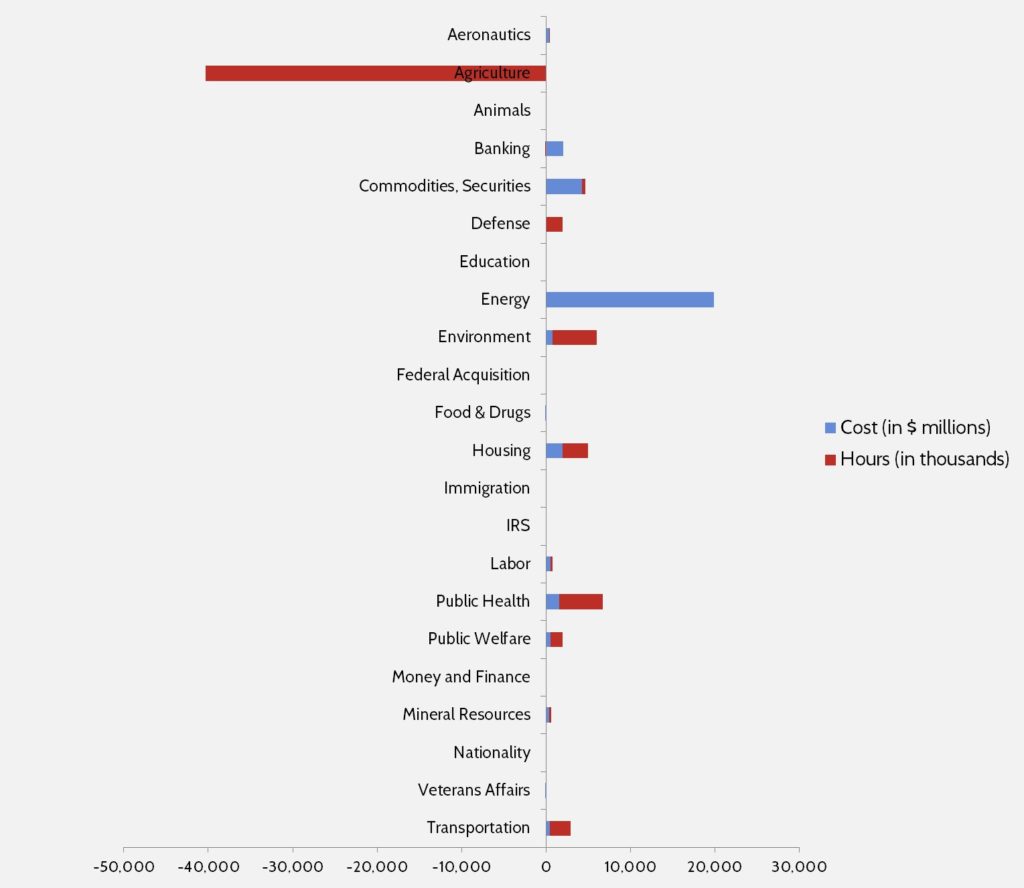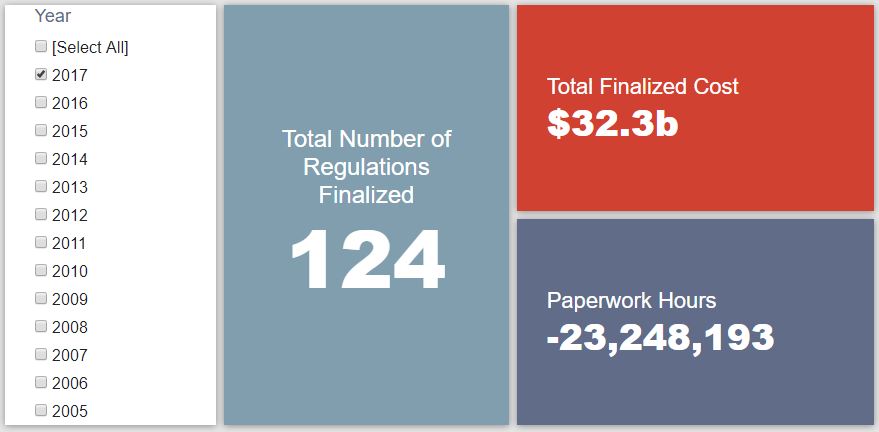Week in Regulation
July 17, 2017
One Energy Rule “In,” No Clear “Out”
It was yet another relatively quiet week in the regulatory realm. The only notable action was a finalized set of energy efficiency standards for walk-in coolers and freezers. Annualized costs (from proposed and final rules) totaled $39.4 million against $269 million in annual benefits. Agencies did not advance any quantified paperwork burdens. The per capita regulatory burden for 2017 is $454.
Regulatory Toplines
- New Proposed Rules: 41
- New Final Rules: 68
- 2017 Total Pages of Regulation: 32,552
- 2017 Final Rules: $32.3 Billion
- 2017 Proposed Rules: $114.3 Billion
The American Action Forum (AAF) has catalogued regulations according to their codification in the Code of Federal Regulations (CFR). The CFR is organized into 50 titles, with each title corresponding to an industry or part of government. This snapshot of final rules (a change from earlier versions) will help to determine which sectors of the economy receive the highest number of regulatory actions.
The Department of Energy (DOE) published the final version of its updated efficiency standards for walk-in coolers and freezers with lifetime costs reaching $600 million ($34 million annually). This is a curious development as it appears to add red to DOE’s regulatory “ledger” under Executive Order (EO) 13,771 without any clear deregulatory actions to balance out these costs or even a discussion of EO 13,771. The rule presumably falls under the EO due to its “economically significant” status. However, since its review originally concluded last year and it originated from a judicial order, there may be complicating circumstances. Perhaps DOE will clarify these issues in future rulemakings or its entry in the still-overdue Unified Agenda.
Tracking Regulatory Modernization
The Environmental Protection Agency (EPA) published a direct final rule that would relax certain requirements established by last year’s “Formaldehyde Emission Standards for Composite Wood Products.” The original rule could impose up to $78 million in annualized costs. However, while EPA tags this recent action as a deregulatory “out” under EO 13,771, they “did not attempt to determine the extent of that burden reduction.”
On regulatory budget implementation, below are the agencies that have accrued annual savings or new costs under the president’s one-in, two-out budget; proposed rules are not included:
- Defense: -$400 million
- Interior: -$360 million
- Education: -$100 million
- Labor: -$78 million
- Veterans Affairs: -$1.9 million
- HHS: -$8.4 million
- EPA: $60 million
- Energy: $34 million
Many of these figures are the result of CRA resolutions of disapproval. Given their historic regulatory output, AAF can predict that Defense, Interior, and Education will likely meet the goal of $0 in net regulatory costs by the end of this fiscal year.
Affordable Care Act
Since passage, based on total lifetime costs of the regulations, the Affordable Care Act has imposed costs of $53 billion in final state and private-sector burdens and 176.9 million annual paperwork hours.
Dodd-Frank
Click here to view the total estimated revised costs from Dodd-Frank; since passage, the legislation has produced more than 74.8 million final paperwork burden hours and imposed $38.5 billion in direct compliance costs.
Total Burdens
Since January 1, the federal government has published $146.6 billion in compliance costs ($32.3 billion in final rules) and has cut 18.4 million paperwork burden hours (due to 23.2 million in reductions from final rules). Click below for the latest Reg Rodeo findings.












